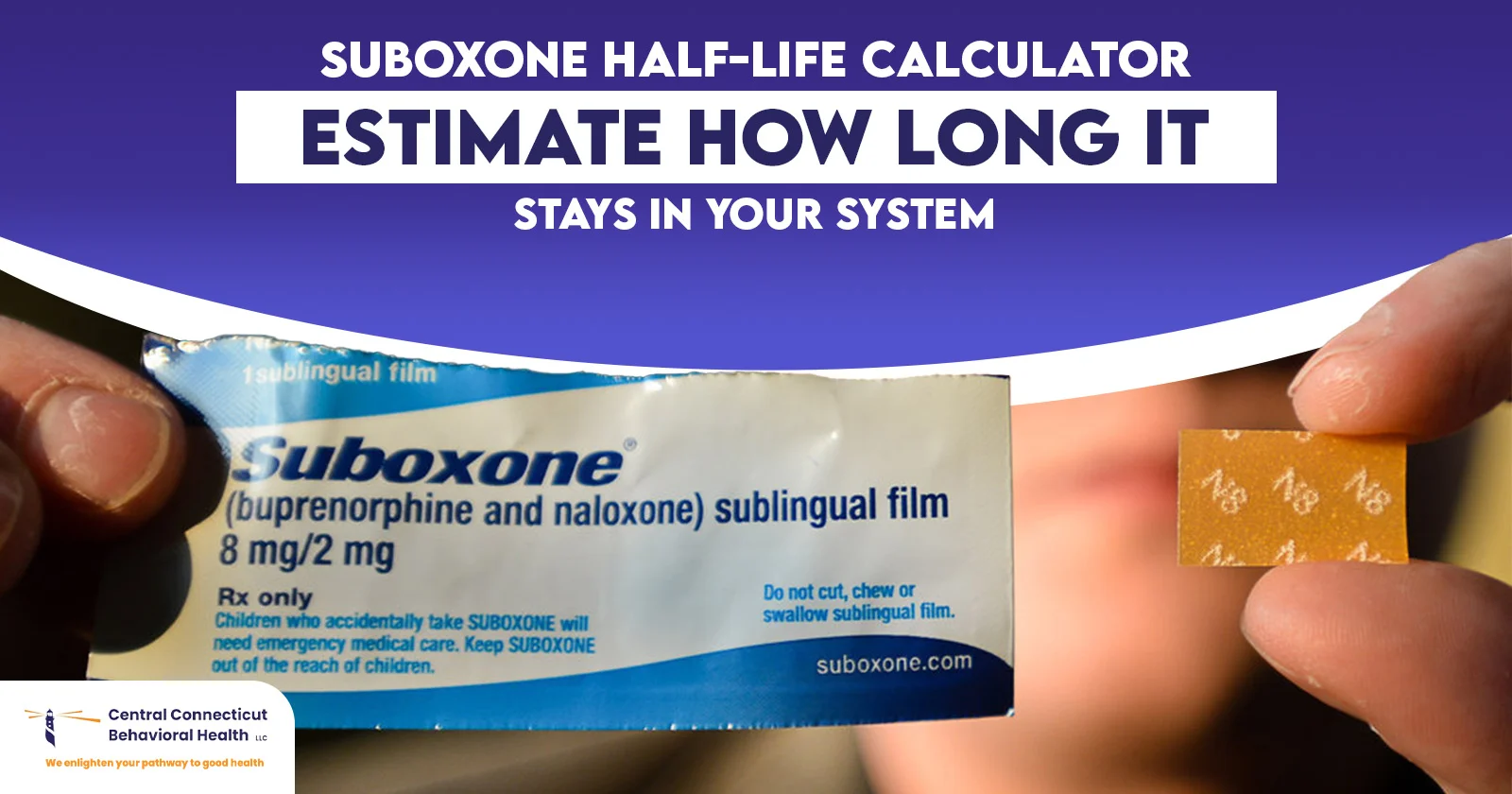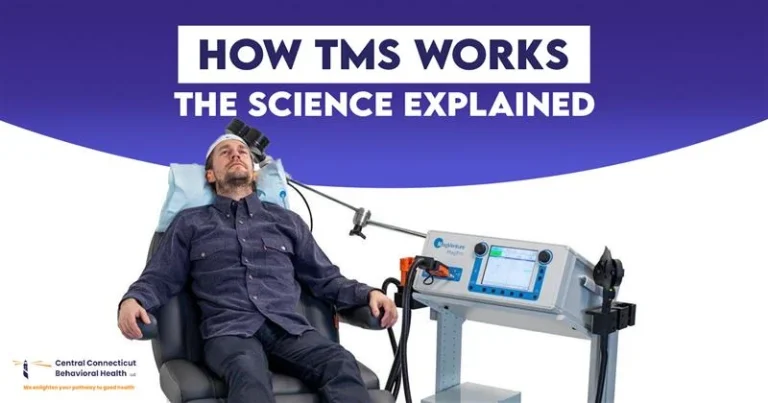It is essential to learn about the details of any drug, in particular, when it is included in an opioid use disorder treatment program. One of the main medications in this sphere is Suboxone, and its presence in the body has a certain time period, which people frequently doubt. In case you have a question about Suboxone half-life and the duration it stays in your body, you are asking the right questions in terms of the management of your treatment and expectations.
In this article, a close examination of the mechanisms of Suboxone will be given in the body. We will discuss its half-life, variables that determine its duration, and the suboxone detection time in different drug tests. Although a suboxone half-life calculator does not exist as a one-size-fits-all tool, this guide will provide you with the knowledge on how to estimate its presence in your system.
What is Suboxone and how does it work?
Suboxone is a prescription medication in brand name and is twofold in active ingredients containing buprenorphine and naloxone. It is primarily used in the treatment of opioid dependence (MAT).
- Buprenorphine: It is a partial opioid agonist. It attaches to opioid receptors in the brain just as other opioids such as heroin or oxycodone do, albeit incompletely. It is a potent antidote to recovery as this effect helps reduce the cravings and prevents the withdrawal symptoms, and does not induce an intense high.
- Naloxone: It is an opioid antagonist. It is added to prevent abuse. The naloxone will be activated when Suboxone is injected, and it may cause unpleasant withdrawal symptoms that can be experienced immediately. When taken as prescribed (through the dissolution of the solution beneath the tongue), the absorption into the bloodstream is very low.
- By combining these two substances in the form of Suboxone, a safer and more controlled way of opioid addiction treatment and protracted recovery ensues.
Knowledge of Suboxone Half-Life
A concept referred to as half-life can be described as the duration of time within which the percentage of concentration of a drug in the body decreases by 50 percent (a half). The specified measure is needed to understand the length of effects of a drug and the length of its identification.
Suboxone has two components with different half-lives:
- Buprenorphine Half-Life: Buprenorphine’s half life is extremely long, as it ranges between 24 to 42 hours.
- Naloxone Half-Life: Naloxone possesses a much shorter half-life; the average half-life is 2-12 hours.
Since buprenorphine is the main active substance that makes Suboxone have therapeutic properties, the longer half-life is what matters indeed when speaking about how long does suboxone stay in your system.
Fifty percent of the drug is eliminated after half-life (approximately 37 hours with buprenorphine) has passed. The half-life being 75 percent, 75 percent remains after a second half-life, 75 percent remains after a third half-life, and so on. Approximately 4-5 half-lives are required for a substance to be virtually removed from the body. In the case of buprenorphine, this would mean that it can take you about 5-8 days to get out of your blood system. Nevertheless, its metabolites are also longer detectable.
Factors That Affect Suboxone Retention Time
Suboxone’s half-life does not match everybody. Several personal factors may influence the rate at which your body metabolizes and excretes the medication.
Metabolism and Body Composition
The rate of metabolism is important. Suboxone will be processed faster by a faster metabolism. The age, genetics, level of physical activity, and overall health are factors that determine your metabolic rate. The percentage of body fat also matters since buprenorphine is fat-soluble and is able to be stored in the body’s fatty tissues, and thus the elimination period of the person with a higher body fat percentage is longer.
Dosage and Frequency of Use
The increased amount of Suboxone will take longer to get out of the body. On the same note, in case you have been taking Suboxone for a long time, the drug may build up in your system. An individual who has taken it every day for several months would have a bigger detection window than one who took a single dose.
Liver Function
The liver is the major organ involved in the metabolism of buprenorphine. Dysfunction of the liver in any way may slow this process to a crawl. The Suboxone half life liver disease effect is significant to patients having such conditions as hepatitis or cirrhosis. Their system will retain the drug over a significantly longer period, with a higher risk of side effects. Assuming that you have liver problems, your doctor would probably lower your dosage and keep a close watch on you.
Other Medications
The use of other drugs will interfere with the way your body processes Suboxone. Certain medications may accelerate or decelerate the liver enzymes that break down buprenorphine, causing a change in half life. It is essential to tell your healthcare provider about all drugs and supplements that you are taking.
Suboxone Detection Time in Drug Tests
The suboxone detection time as a drug during the screening is one of the most frequent questions. The period of detection differs with the nature of the test applied.
The most common procedure of drug screening is urine tests. In the case of Suboxone, the duration of Suboxone in the blood is determined by usage. Buprenorphine may last as long as 6 days in urine following the last dose. In the case of long-term, chronic users, this period may be up to 2 weeks.
The Half-Life of Suboxone in The Blood?
Current impairment is normally identified by blood tests due to the shorter detection window. Buprenorphine is usually available in the blood for as long as 2 days following the dosage. These are not so commonly used in routine drug monitoring. Saliva tests are also becoming very popular because of their non-invasive nature. The buprenorphine may be detected in the oral liquid up to 3 days following the intake.
Suboxone Hair Test How Long?
The hair follicle tests have the maximum detection period. Detection of traces of Suboxone can occur in a hair trial up to 90 days or more following the intake. This approach is promising in the identification of a long history of use of Suboxone due to the longevity of the hair test.
Both methadone and suboxone are used in MAT, and differ in terms of their pharmacology. The most important difference is the half life of Suboxone and methadone.
- Half-Life: Buprenorphine Suboxone Half-Life: 24-42 hours.
- Methadone Half-Life: 8 to 59 hours, and in some cases it can be prolonged.
Methadone has a half life that averages longer and more variable. This translates to the fact that the methadone is retained in the body longer, and hence it can only be administered once a day. But it is also more likely to cause overdose in the first dosing period because of its long and unpredictable half life. The imaging reduced and more predictable half life of Suboxone has been regarded as a safety benefit.
Suboxone Half-Life and Withdrawal Timeline
The withdrawal is directly related to the long Suboxone half-life. Suboxone withdrawal is postponed under the influence of short-acting opioids, the withdrawal of which may appear in several hours.
Suboxone half-life and withdrawal period usually appear in the following way:
- First Phase (1-3 days): Due to the long half-life, the withdrawal symptoms do not normally start before 24-72 hours after the final dose.
- Peak Phase (3-5 days): Anxiety, muscle pain, insomnia, and gastrointestinal difficulties can be the most problematic between the third and fifth day.
- Lingering Phase (1-4 weeks): Do not forget that although the worst physical symptoms disappear, psychological symptoms such as depression, anxiety, and cravings may still last several weeks.
- Due to such a period of time, it is very important to reduce the use of Suboxone gradually with the help of a doctor instead of quitting. A medical professional can develop a progressive reduction plan to reduce the intensity of the withdrawal symptoms.
Professional Guidance in Connecticut
The opioid addiction treatment process is challenging, and it has to be provided by experts. The explanation of such details as the half-life of the Suboxone is only a part of the process. The most important thing that should be done by those who want assistance is reaching out to a qualified provider. In Connecticut, such facilities as Central CT Behavioral Health provide holistic programs to help people cope with recovery.
It is important to find a reliable source. Central Connecticut Behavioral Health is an organization that offers evidence-based care and medication-assisted treatment using Suboxone to assist people in achieving and sustaining sobriety. Professional advice means that your treatment program will be customized to meet your needs and needs, taking into consideration all the individual factors that change the rate at which your body responds to medication.
FAQs about Suboxone Half-Life
What is the retention time of Suboxone in you?
Most people require around 5 to 8 days to eliminate buprenorphine contained in Suboxone in their blood. Nevertheless, its metabolites may be detected longer in the urine, hair, and saliva. This timeline can be prolonged by such factors as dosage, metabolism, and liver health.
What is the duration of Suboxone in the urine?
Buprenorphine will be found in urine for as long as 6 days after administration. In long-time users of Suboxone, it may take up to two weeks to detect them.
Is there a half-life calculator for Suboxone?
No standard Suboxone half-life calculator exists since the time that it takes to excrete it is very individual. It is affected by a multitude of factors such as your liver, metabolism, age, weight, and history of use. The only way of knowing your own circumstances is through a meeting with a health care provider.
Does liver disease impact the half-life of Suboxone?
The buprenorphine metabolism is slowed down significantly by liver disease. This implies that the drug remains longer in the body, which raises its half-life and chances of side effects. The patients who have liver impairment may need dose adjustments.
How quickly can Suboxone be detected in a hair test?
The hair follicle test has the greatest window of detection. It can detect Suboxone taking up to 90 days after the last dose.














